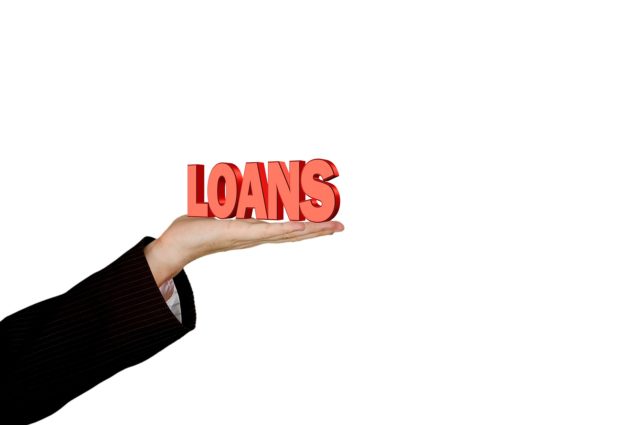In modern times, financial exigencies have become part and parcel of daily lives. No matter how hard you try to avoid such a situation, but the fact of the matter is sometimes or other, you are bound to face some financial problems.
The usual response during contingencies is to either use your savings to meet the requirement or taking a bank loan. Liquidating your savings can be a dangerous approach. Not only do you run the risk of exhausting your savings but are also left vulnerable for the future. Whereas, when you take a loan, you not only effectively meet your financial obligations on time; but also repay the debt with complete flexibility and protect your savings at the same time.
There are various financial products offered by financial institutions for individuals in need of funds. Two of the most popular options that you can exercise in such a situation are a personal loan or a secured loan against your savings such as loan against PPF.
What are Personal Loans?
Personal Loans are unsecured loans offered by financial institutions like banks and NBFC for their customers. Personal Loans such as ICICI Personal Loan are offered to help the customer meet a financial exigency without any need to use the savings. It can be used for a variety of purposes including medical expenses, traveling, higher education, etc. The money has to be repaid in EMIs over the specified repayment tenor, which can extend up to 60 months. As these loans are unsecured in nature, you need not offer any collateral to secure the loan amount. Interest rates against Personal Loans can vary from between 11% to 24% p.a, depending on the lender.
What is are Loans against PPF?
PPF or Public Provident Fund is a long term investment scheme which enjoys the backing of the Central Government of India. Herein, customers must open a PPF account with a bank or a post office. Every year customers can deposit up to Rs. 1.50 Lakh in the PPF account. Interest rates are controlled by the Government and are announced every year. Although PPF accounts carry a lock-in period of 15 years, customers can avail a loan against PPF to meet any short-term financial requirements. Loan against PPF is available for a maximum of 3 years, and the interest rate is the prevailing PPF interest rate + 2%. For example, if the present rate of interest against PPF is 7% p.a, the loan against PPF will be offered at 9% p.a.
Personal Loan vs. Loan against PPF
With both these options having their own advantages, it is possible for you to get confused. You must, therefore, understand the pros and cons of each option to be able to make an informed decision. Here is a comparative analysis of both these loan options for your assistance: –
Repayment Tenor: The duration of loan signifies the number of EMIs you are required to pay against the borrowed amount.
Personal Loan
Repayment tenor of a Personal Loan depends on the bank or NBFC from which you have taken the loan. Presently, Personal Loan Interest Rates start from 11% p.a. and can go up to 24% p.a. The maximum repayment tenor available for a Personal Loan is up to 60 months.
Loan against PPF
The maximum repayment tenor available for a Loan Against PPF is 36 months from the date of disbursal. If the entire amount is not repaid during this period, the interest rate increases by 6% instead of 2%, i.e., your loan may become costlier than a Personal Loan.
Interest Rate: It specifies the interest rate that is chargeable against the amount borrowed by you.
Personal Loan
The lender specifies the rate of interest chargeable against a Persona Loan at the time of approval. It might vary across lenders and depends on a number of factors such as income, credit score, repayment history, etc. Presently interest rates against Personal Loans vary between 11% to 24%.
Loan against PPF
The interest rate payable for a Loan Against PPF is non-negotiable. The borrower needs to pay 2% above the prevailing interest rate offered against the PPF account balance. If the repayment is delayed beyond three years, the interest rate payable would be 6% above the prevailing PPF Interest Rate.
Maximum loan amount: It specifies the maximum amount that you can borrow as a loan for your requirements.
Personal Loan
The maximum amount available as a Personal Loan depends on the lender you have chosen and a number of other factors. There is no ceiling on the maximum amount available as a Personal Loan.
Loan against PPF
The maximum amount which you can avail as a Loan Against PPF is 25% of the account balance 2 financial years ago. For instance, if you are applying for a loan against PPF in FY 2019-20, the balance on 31.3.2018.
Frequency: It specifies the number of times you can avail the loan in a given financial year.
Personal Loan
When it comes to availing a personal loan, there is no cap on the number of times you can avail the facility. As long as lenders are willing to offer you a Personal Loan, there are no restrictions placed.
Loan against PPF
You can avail a loan against PPF only once every financial year. Even if you have repaid a previously taken loan in a given year, you can not avail a loan against PPF again during the year.
Availability: It specifies when you can avail the loan if required.
Personal Loan
You can avail a Personal Loan as and when you want. It is entirely at the discretion of the lender to accept or reject your loan application. Moreover, you can apply as many times as you want to.
Loan against PPF
You can avail a Loan Against PPF only after three years of opening the account. After six years of opening the account, you can not take a loan but can exercise the option for withdrawal.
Depending on your requirement and preferences, you can opt for any of these two options to meet your financial requirements without depleting your savings.








